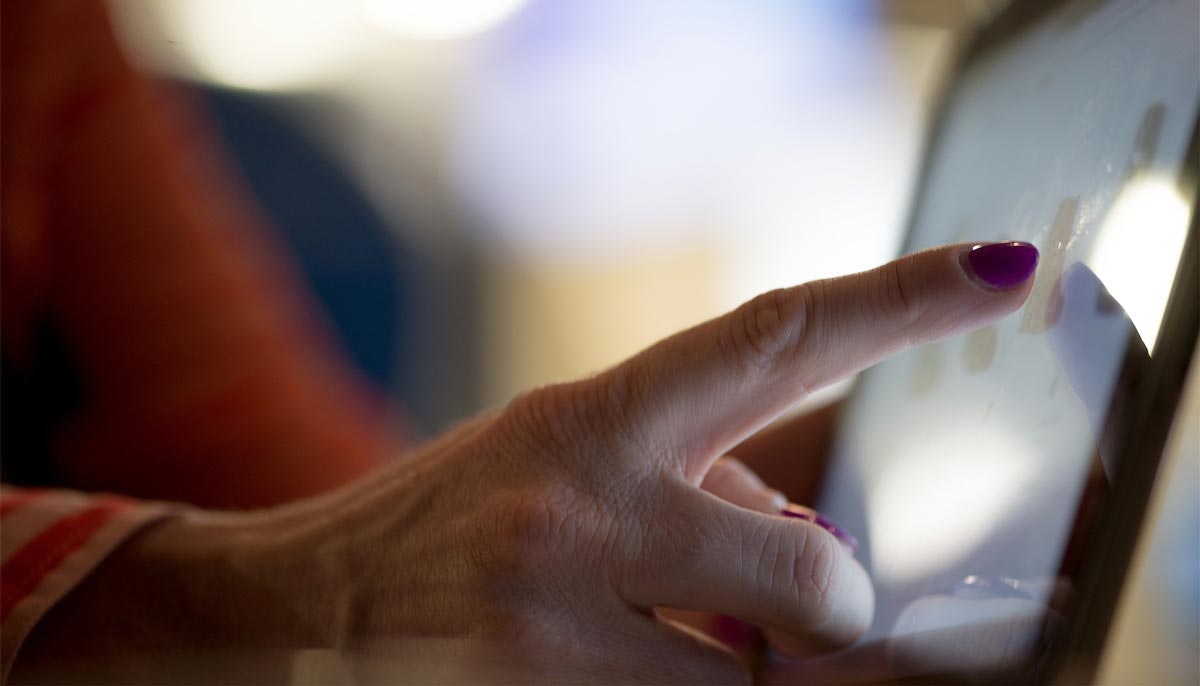Back when Apple introduced the iPhone in 2007, touchscreens seemed futuristic and new. Now, touchscreens are everyday fixtures for most people. Here are some facts you might not know about touchscreen technology.
- Touchscreen technology has been around since the 1960s.
E.A. Johnson is credited with developing the first capacitive touchscreen in the 1960s. His touchscreen could only register one touch at a time, and was used in air traffic control systems. In 1977, at the European Organization for Nuclear Research (or CERN) implemented early mutual capacitance touchscreen technology for its control room of the Super Proton Synchrotron particle accelerator. The HP-150 was one of the first commercially available “touchscreen” computers (it actually used infrared light beams that, when broken, detected where to place the cursor) and retailed for $2795. Touchscreen technology has been used in point of sale machines, first seen in the Atari 520ST, since the mid-1980s (Atari was also the first to include color graphics). Touchscreens were widely used in PDAs in the 1990s.For more interesting history on touchscreens and multi-touch technology, check out this timeline by one of the early innovators of multi-touch, Bill Buxton.
- The first touchscreen phone was released in 1994.
The IBM Simon was released in 1994 and is generally considered the first “smartphone.” It had a touchscreen interface controlled with a stylus, 1 megabyte of storage, and gave the user the ability to make and receive calls, emails, faxes, and had early calendar, address book, notes, maps, stocks, and news apps. It retailed for about $899 (or $1099 without a service contract). The battery only lasted for an hour at a time, and was eventually put out of production by smaller, slimmer cell phones.
- Many products have been created to accommodate touchscreens.
The touchscreen on your phone is, at its simplest, a capacitive touchscreen — it uses the electrical conductivity of your skin to detect gestures and input. Barriers between skin and screen, like gloves, interrupt this. As touchscreens have become more and more ubiquitous, non-technical objects have been altered to accommodate them. Items like gloves and bandages can now be found with touch screen-friendly material, allowing users to still interact with their devices despite a material barrier.You can even make your own touchscreen friendly gloves!
- If you can eat it, it will probably work as a stylus.
It’s cold out and you don’t have your handy touchscreen friendly gloves on? Grab a banana! Or maybe a hotdog. Even an avocado. Many food items are electrical conductors, and like your fingers, can be used to control a touchscreen.
- Products are being developed to turn everyday objects into touch sensitive surfaces.
Researchers at Carnegie Mellon University’s Future Interfaces Group (FIG) combine a conductive material with electrodes to create touch sensitive surfaces out of almost anything, even irregular-shaped objects:“The “trick” is to apply electrically conductive coatings or materials to objects or surfaces or to craft objects using conductive materials. By attaching a series of electrodes to the conductive materials, researchers showed they could use a well-known technique called electric field tomography to sense the position of a finger touch.”“Walls, furniture, steering wheels, toys and even Jell-O can be turned into touch sensors with the technology….” Read the full article “CMU Creating Touchpads With Can of Spray Paint” here.
Another of FIG’s innovations is Wall++, a technique using paint to turn a regular wall into a touchscreen-like interface:
The FIG lab at CMU is developing many new and innovative ways for humans to interact with technology, including touch. You can check out more of their research here.
The best kind of touchscreen is a working touchscreen, so if you’ve got the broken screen blues, we can help. Learn more about our local services here.



